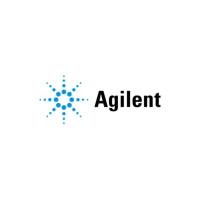Viewing and Editing Assembled Sequences Using Consed
互联网
- Abstract
- Table of Contents
- Materials
- Figures
- Literature Cited
Abstract
Consed is a program for viewing and editing assemblies prepared by the Phrap assembly program. This unit presents a general introduction to Consed. It also provides instructions for identifying problem regions and searching in Consed. Additional protocols describe creating tags, picking primers, correcting joins and adding and removing reads. Instructions are also given for the use of Assembly View, predicting the results of a restriction digestion, the use of Consed in conjunction with PolyPhred, and using Autofinish, as well as a procedure for running Phred and Phrap.
Table of Contents
- Basic Protocol 1: General Introduction to Consed Features
- Basic Protocol 2: Identifying Problematic Regions in Consed
- Basic Protocol 3: Creating Tags
- Basic Protocol 4: Using Consed to Pick Primers
- Support Protocol 1: Running Phred and Phrap
- Basic Protocol 5: Tearing and Joining Contigs and Adding and Removing Reads
- Basic Protocol 6: Assembly View and Miniassemblies
- Basic Protocol 7: Restriction Digests
- Basic Protocol 8: Consed‐Polyphred Interaction
- Basic Protocol 9: Autofinish
- Guidelines for Understanding Results
- Commentary
- Literature Cited
- Figures
- Tables
Materials
Basic Protocol 1: General Introduction to Consed Features
Necessary Resources
Basic Protocol 2: Identifying Problematic Regions in Consed
Necessary Resources
Basic Protocol 3: Creating Tags
Necessary Resources
Basic Protocol 4: Using Consed to Pick Primers
Necessary Resources
Support Protocol 1: Running Phred and Phrap
Necessary Resources
Basic Protocol 5: Tearing and Joining Contigs and Adding and Removing Reads
Necessary Resources
Basic Protocol 6: Assembly View and Miniassemblies
Necessary Resources
Basic Protocol 7: Restriction Digests
Necessary Resources
Basic Protocol 8: Consed‐Polyphred Interaction
Necessary Resources
Basic Protocol 9: Autofinish
Necessary Resources
|
Figures
-
Figure 11.2.1 The Consed Main window. Note the box at the top of the screen lists the current ace file name (standard.fasta.screen.ace.1). Clicking the Digests button (top of the screen, second row of buttons) will cause the restriction digests window to open. View Image -
Figure 11.2.2 The Aligned Reads window using the standard.fasta.screen.ace.1 file. The Some Tags button—top right between the contig name (Contig1) and the Pos: box—allows the user to selectively suppress displaying some tags, which is useful when too many are overlapping. By typing or pasting a number into the Pos: box, the display will scroll to that position. The “<<<” and “>>>” buttons (bottom left) are for scrolling to the left‐ and right‐most positions of the consensus. The “<<” and “>>” buttons scroll by screenfuls and the “<” and “>” buttons scroll by half screenfuls. The Prev and Next buttons scroll to the next item in whichever navigator list is currently active. Navigator lists are accessed via the Navigate menu (top left between File and Info). Clicking the Err/10kb button recalculates the error rate of the entire contig, excluding user‐edited bases, which is 313.29. The Compl Cont and Compare Cont buttons access the Complement Contig and Compare Contig windows, respectively. Bases that disagree with the consensus are red while bases that agree with the consensus are black. A masked vector is indicated by xxx.... The red bar under undefinedt is a compression tag. View Image -
Figure 11.2.3 The Aligned Reads window. In this example, the user is pointing at a read and holding down the right mouse button, causing a menu to pop up, partially obscuring the reads. This pop‐up menu allows access to several Consed functions. View Image -
Figure 11.2.4 The Trace window. The box at the upper left displays the read name (djs74‐824.s1). To the right of this box are the symbols con and rd. Numbers above the trace even with con are the consensus position, while number above the trace even with rd give the read position. Below the read name box, the arrow indicates the orientation of the read within the contig (in this case the direction of sequencing is left so this is a bottom‐strand read; notice the read positions increase to the left). Below this are the horizontal (H) and vertical (V) magnification bars. To the right of these bars are the labels for the three series of bases displayed. Those bases even with con (the second occurrence) are the consensus bases. Those even with edt are the edited read bases. Those even with phd are the unedited read bases (original phred base calls). Below the bases the trace itself is given. Note that the vertical line running through the trace (read position 449) indicates the location of the Consed cursor, where editing is performed. View Image -
Figure 11.2.5 The Low Consensus Quality window. There are two dozen similar windows in Consed, each with a different list of items such that the user can simply click to go to the location of the item in the Aligned Reads window (Fig. ). View Image -
Figure 11.2.6 The Compare Contigs window. View Image -
Figure 11.2.7 Assembly View shows contigs ordered into scaffolds by pairs of forward and reverse universal primer reads. It is similar to phrapview, but is tightly integrated into Consed: clicking will take the user to and from other Consed windows. The three gray bars with pink labels 2, 3, and 1 are the contigs. Pink 1 means Contig1, pink 2 means Contig2, and so forth. Notice the scale on the contigs. This gives the contigs position. Consistent forward‐reverse pairs within contigs are not shown in this example, since that would add much clutter. Some gap‐spanning forward‐reverse pairs are purple, indicating that there is more than one such forward‐reverse pair on top of each other. View Image -
Figure 11.2.8 Format of the fragsizes.txt file. View Image -
Figure 11.2.9 The Display Digests window. This window allows comparison of the sizes of predicted and actual restriction digest fragments. This shows many more fragments than the user will see with the exercise. View Image -
Figure 11.2.10 Traces Window showing all traces in a scrolling window. PolyPhred has already been run, so polymorphic sites are tagged. View Image -
Figure 11.2.11 Information preceding the Autofinish parameter list in the Autofinish .out file. View Image
Videos
Literature Cited
| Ewing, B. and Green, P. 1998. Basecalling of automated sequencer traces using Phred. II. Error probabilities. Genome Res. 8:186‐194. | |
| Ewing, B., Hillier, L., Wendl, M., and Green, P. 1998a. Basecalling of automated sequencer traces using Phred. I. Accuracy assessment. Genome Res. 8:175‐185. | |
| Gordon, D., Abajian, C., and Green, P. 1998. Consed: A graphical tool for sequence finishing. Genome Res. 8:195‐202 | |
| Gordon, D., Abajian, C., and Green, P. 2001. Automated finishing with autofinish. Genome Res. 11:614‐625. | |
| Key References | |
| Ewing and Green, 1998. See above. | |
| This paper describes Phred. | |
| Ewing et al., 1998. See above. | |
| This paper also described Phred. | |
| Gordon et al., 1998. See above. | |
| This is the original Consed paper. | |
| Gordon et al., 2001. See above. | |
| This paper describes Autofinish. | |
| Internet Resources | |
| http://www.phrap.org | |
| The Phred/Phrap/Consed System Home Page |







